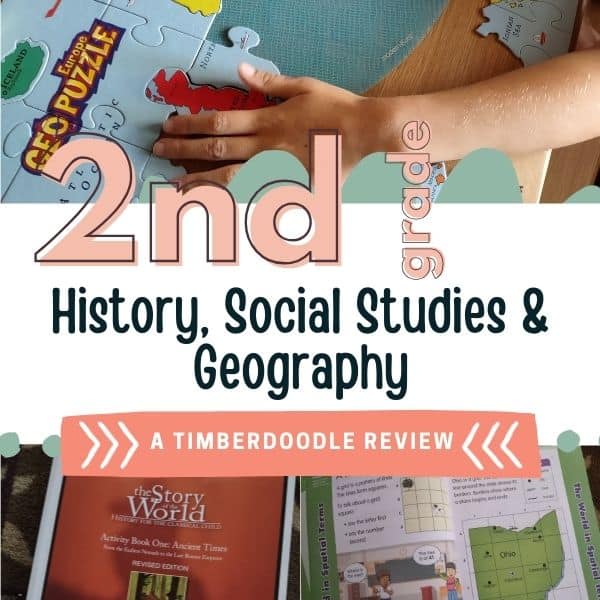Engaging Problem Solving with Games || Lion in My Way Review
This post may contain affiliate links, which means I may receive compensation if you make a purchase using one of these links.
Young children often have the gift of imagination, but they don’t always know how to apply problem-solving skills. Games are a great way to integrate innovation with cooperation for real-life skills. We tried out the eeBoo Lion in my Way early childhood game, and here’s what we thought.
Lion in my Way: A Game of Imaginative Problem Solving is recommended for ages 5+ on the box, however, my four-year-old daughter found it engaging with a little simplification, and some three-year-olds may also enjoy it with older siblings and adult guidance. Reading and comprehension skills are a bonus for making play easier, but if you’re willing to explain things to young children, it’s still a great and valuable experience.

There aren’t a lot of card or board games that I’ve found to be suitable for the 2-5 age range, so I was eager to try this one out. As I read the instructions, I was apprehensive, but when we began playing, my Pre-K daughter surprised me with how quickly she grasped and enjoyed the game.
Instead of fostering a spirit of individual winning, Lion in my Way encourages players to work together to create innovative solutions to arrive home together. It poses the question, “using the tools you have, how would you overcome this given obstacle in your path?” Not only do children have to think critically and creatively, but they also have to consider how they can help each other for the greater good of all players.
What is the Lion in my Way game?
Created by the eeBoo corporation, a woman-owned business out of New York, Lion in my Way comes in a colorful and sturdy game box. Two to five players can enjoy the game, and it is estimated to take about 15 minutes to play a round.
With the objective to create solutions for overcoming obstacles in the path using a variety of random tool cards, children and adults will enjoy being silly, creative, serious, and innovative.
The instructions for play are printed in English on the inside of the box lid (that’s a win as it can’t be lost!). There is an inserted paper of instructions in alternative languages, however. There is standard play, and alternative play instructions. In my opinion, standard play is best for younger children (we even simplified it even more), and alternative play would be fun for those over 5 years old.

The game comes with 25 path cards and 100 tool cards. The box has a nice cardboard insert to keep the cards organized and cared for.
Unlike many preschool games that feel like drudgery to adults to play, I have to admit, Lion in my Way is actually pretty fun!
Playing Lion in my Way
Standard play incorporates picking a Path Card and dealing out several Tool Cards to each player (varies by the number of players in the round).
The 25 Path Cards show a variety of obstacles in the middle of “the path”, including things like a wall, thunderstorm, dark tunnel, river, toll booth, and of course, a lion. Each path card features the printed word that names the obstacle. This is very helpful!
The 100 Tool Cards are pictures of a vast variety of objects and animals. There is everything from a sandwich to a skunk, and a cooking pot to a mop. Each picture is notably lacking a printed word description, and a few pictures were not easily identifiable to my daughter, or even to me. These we just left up to our own interpretation of their possible use.
With a Path Card selected, each player picks one of their Tool Cards and explains how that item could be used to overcome the obstacle in the path. The instructions say that after each player presents their chosen creative solution, you can work together to create even more solutions with the tools, including combining them.
When my 4-year-old and I played, we kept it simple by having each of us pick one tool. We skipped the group solutions to keep it easy.

After all solutions have been offered, a vote is taken to decide the “best” solution. It could be the most practical, most innovative, silliest, or some other criteria. I let my daughter choose which one made more sense to her. Often she chose the one that seemed most practical to her, which may or may not have been the same one that made sense to me!
That ends the round, and a new Path Card is drawn, tool cards that were presented are put on the bottom of the tool card pile, and a new tool card is drawn by each player. A short game recommends using 10 Path cards, while 20 could be used for a long game. We went through most of them, but our rounds were much shorter since we skipped the collaboration part.
As she gets older, we will definitely add the collaboration element in, particularly if we play the game with our homeschool co-op or other friends. The skill of working together adds a special element to this game, rather than a competitive “I win” focus. However, my daughter definitely used the “picking the best solution” part as an “I win/you win” scenario. But it doesn’t have to be that way if you redirect the wording and purpose, or focus solely on a collaborative initiative.
What We Love About Lion in my Way
First off, from a parent’s perspective, this game is different from repetitive preschool games. Not only do our children get to use their imagination and innovation, but so do we! With 100 tool cards, there is a huge variety of creativity and collaboration that can occur, making each round different and unique. Of course, this is good for our kids too!
The cards are well-made and colorfully illustrated. While, at first, I was a little disappointed that the tool cards did not have a printed word defining what the items were, I think it may also be an advantage, especially to young children. Because they are simply looking at the picture, they can be more creative in how that item could be used based on what they see, instead of just a word telling them how it should be used.

The 25 Path Cards are a good variety of scenarios including weather, animals, landscapes, natural phenomenons, and even silly obstacles like an Ogre. I could tell that my daughter really had to think about some of them, and it presented a great opportunity to talk about the danger of certain things (such as fire, ice, thunderstorm, etc.), or what happens in real-life situations like coming to a toll booth or being stuck in a traffic jam.
I feel this game does an excellent job in touch on real, practical things in life, while also incorporating silly and imaginative situations for a lighthearted twist.
What We Didn’t Love About Lion in my Way
Our biggest challenge was figuring out some of the tool card pictures, and also understanding the initial game instructions. When I first looked at the path cards, it took me one round to figure out that each card had a pathway on it, with an obstacle in the middle that the tools need to overcome.
I’d attribute my confusion to trying to read the instructions while my four-year-old jabbered at me and was messing with all the cards! Taking a minute to unpack the box and read the directions before introducing it to your child may help!
Many of tool cards will most likely have to be explained to young children as they just haven’t been exposed to, and may not recognize things such as stilts, passport, pully, ball and chain, or a cement maker. In my opinion, most of the cards are ordinary items, with the exception of one–a crystal ball. On the back of the box they give an example “ask the crystal ball the way [through the maze]”. If your family finds this item against your religious beliefs, I’d suggest taking it out of your deck. Since there are 100 tool cards, removing any that you don’t agree with wouldn’t make a difference in game play.
Children may become frustrated if their particular hand of tool cards doesn’t offer any solutions that make sense for the obstacle in the path, so it’s important to keep encouraging them to be creative and think “outside the box”. Allowing them to combine tools or offering up one of yours in combination might stretch the rules, but it could also encourage divergent thought processes.

Final Thoughts on Lion in my Way
Lion in my Way has become a frequently requested game in our home and I think unpredictableness of the situations and solutions may play a part in that. Each round of the game is a little different and offers an opportunity for new laughs, conversations, and natural learning to happen.
Related Articles on Homeschooling:
- Djeco Bugs Scratch Art Kit Review
- Bugzzle Pattern Puzzle Review || Math Concepts to Grow With
- Smart Start STEM Pre-K Workbook Review
- Zoo Picture Puzzle Book Review || Visual Learning with Search & Find







